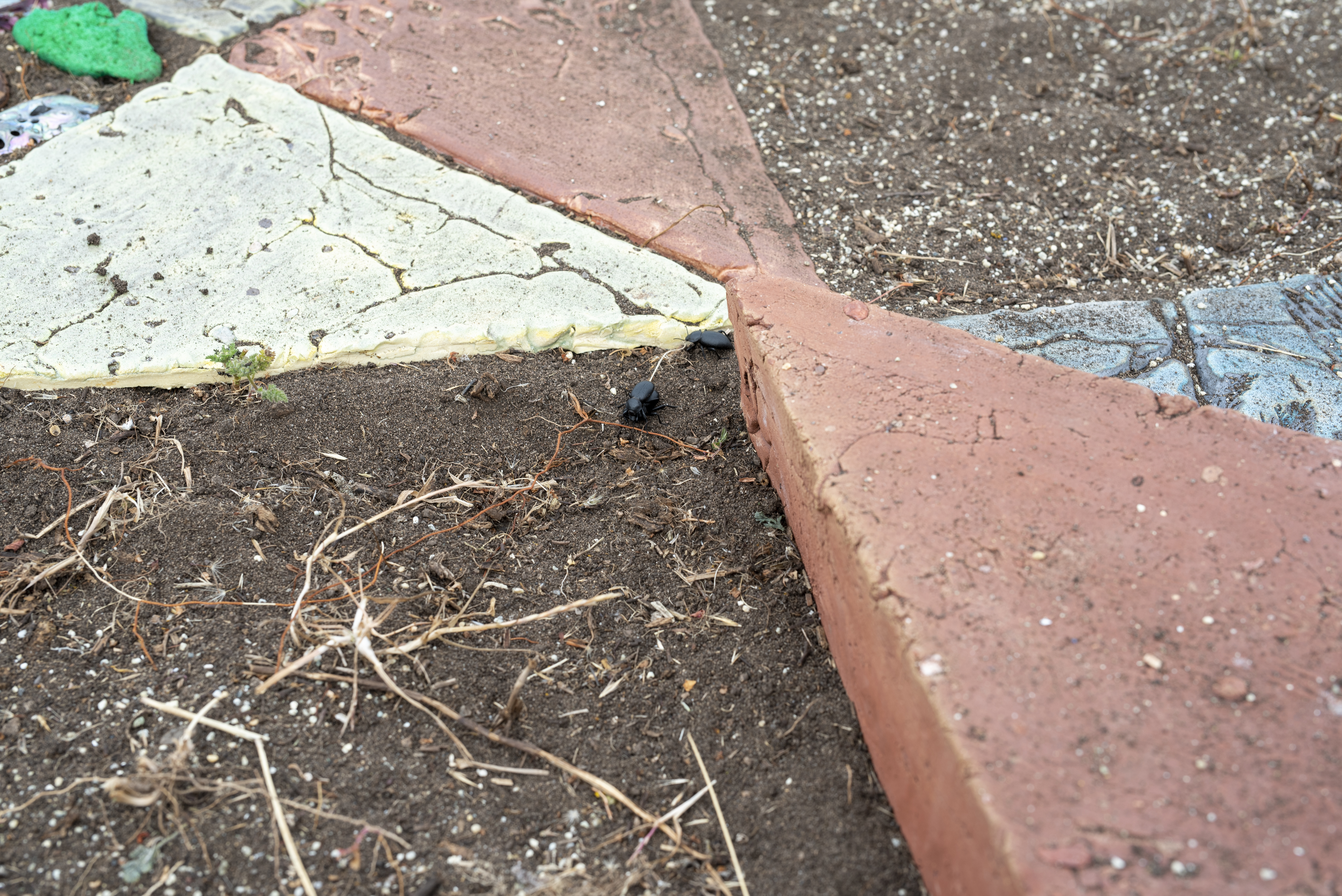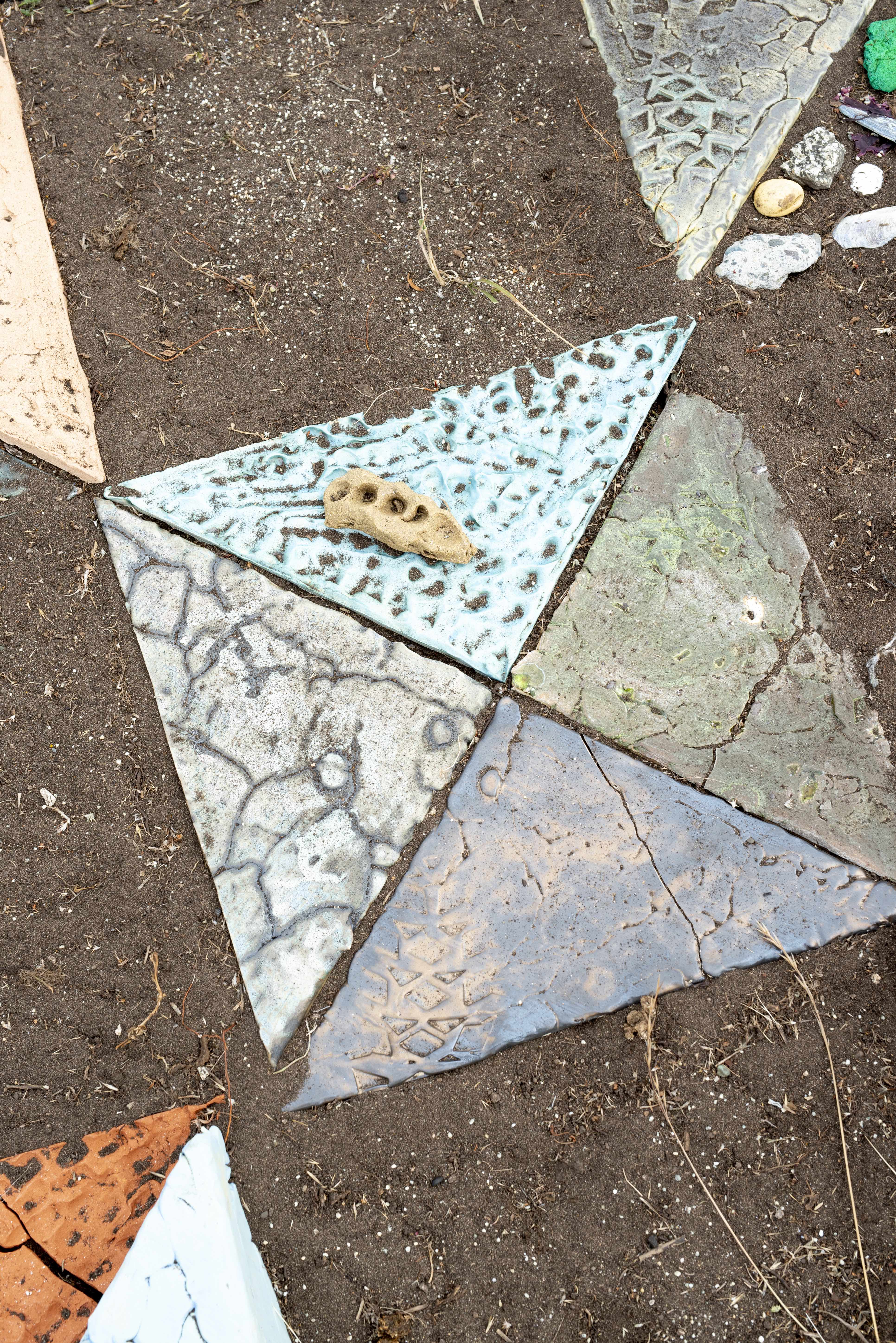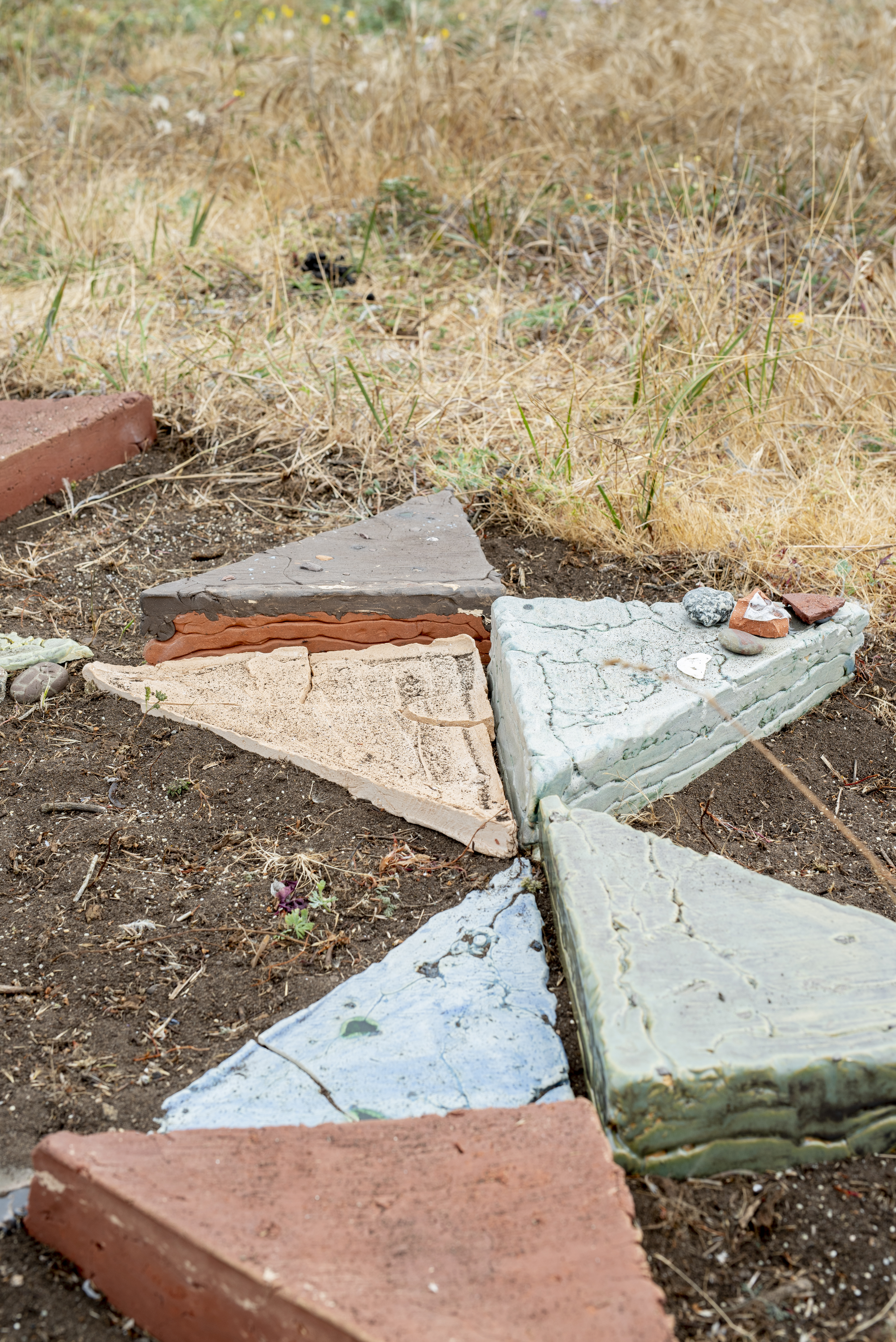
Compass Sampler (Variation)
2023
Stoneware and glaze, earthenware, glass, and stones from Chicago, Baltimore, Steuben, Waterville, and Bodega Bay
90" x 90"




Nicrocosms: Studies on scavenging and renewal is an outdoor group exhibition showcasing the work of 9 artists engaging with themes related to the life history and ecological research on a scavenging beetle present at the site.
Beetles in the genus Nicrophorus, or burying beetles, search for a small carcass that they then bury in the soil in order to reproduce. A pair of burying beetles will work together to defend the rare, ephemeral, and high-nutrient carcass from microbial competitors and other interested organisms. They bury the carcass together and the female will lay eggs nearby. Once the carcass has been protected, buried, and preserved, both parents use the carrion to feed their larvae when they hatch.
In my research at the Bodega Marine Reserve, I use experimental chambers in the field to investigate the effects of temperature, competition, resource quality, microhabitat, and fog regime on burying beetle reproductive success. I have been calling these chambers nicrocosms, after Paul E. Hopwood et al.’s 2016 paper in Ecological Entomology. In this paper, nicrocosm is a play off of microcosm or mesocosm, an experimental set-up used in ecology to run controlled manipulations in small spaces that are still relevant to and part of the natural world. The root cosm, though, holds an even greater weight, meaning “world,” “order,” and “universe.” In this way, each nicrocosm in the field encapsulates an entire universe: an answer to an ecological question, the life’s work of an unseen beetle, birth and death, and the passing of time.
This exhibition will consist of works that serve as nicrocosms themselves, portals into the often overlooked and misunderstood world of scavengers. Burying beetles, in many ways, are the ultimate scavengers: they rely on and are adapted to a fleeting resource, and they play a crucial role in processing the dead so that those nutrients can be used again by the greater ecosystem. Whether using local and found materials, circular and sustainable processes, visual storytelling, or some combination, each artist provides a novel way to see and experience the living world we are within.
-Tracie Hayes
Funded by the Bilinski Educational Foundation.
Artists include: Michele Burr, E. Saffronia Downing, Emily Gordon, Emily Goyins, Rosemary Holliday Hall, Ryan Hodge, Kelley O’Leary, Ofelia Viloche Pulido, Alejandra Ruiz Suárez
![]()
Beetles in the genus Nicrophorus, or burying beetles, search for a small carcass that they then bury in the soil in order to reproduce. A pair of burying beetles will work together to defend the rare, ephemeral, and high-nutrient carcass from microbial competitors and other interested organisms. They bury the carcass together and the female will lay eggs nearby. Once the carcass has been protected, buried, and preserved, both parents use the carrion to feed their larvae when they hatch.
In my research at the Bodega Marine Reserve, I use experimental chambers in the field to investigate the effects of temperature, competition, resource quality, microhabitat, and fog regime on burying beetle reproductive success. I have been calling these chambers nicrocosms, after Paul E. Hopwood et al.’s 2016 paper in Ecological Entomology. In this paper, nicrocosm is a play off of microcosm or mesocosm, an experimental set-up used in ecology to run controlled manipulations in small spaces that are still relevant to and part of the natural world. The root cosm, though, holds an even greater weight, meaning “world,” “order,” and “universe.” In this way, each nicrocosm in the field encapsulates an entire universe: an answer to an ecological question, the life’s work of an unseen beetle, birth and death, and the passing of time.
This exhibition will consist of works that serve as nicrocosms themselves, portals into the often overlooked and misunderstood world of scavengers. Burying beetles, in many ways, are the ultimate scavengers: they rely on and are adapted to a fleeting resource, and they play a crucial role in processing the dead so that those nutrients can be used again by the greater ecosystem. Whether using local and found materials, circular and sustainable processes, visual storytelling, or some combination, each artist provides a novel way to see and experience the living world we are within.
-Tracie Hayes
Funded by the Bilinski Educational Foundation.
Artists include: Michele Burr, E. Saffronia Downing, Emily Gordon, Emily Goyins, Rosemary Holliday Hall, Ryan Hodge, Kelley O’Leary, Ofelia Viloche Pulido, Alejandra Ruiz Suárez
